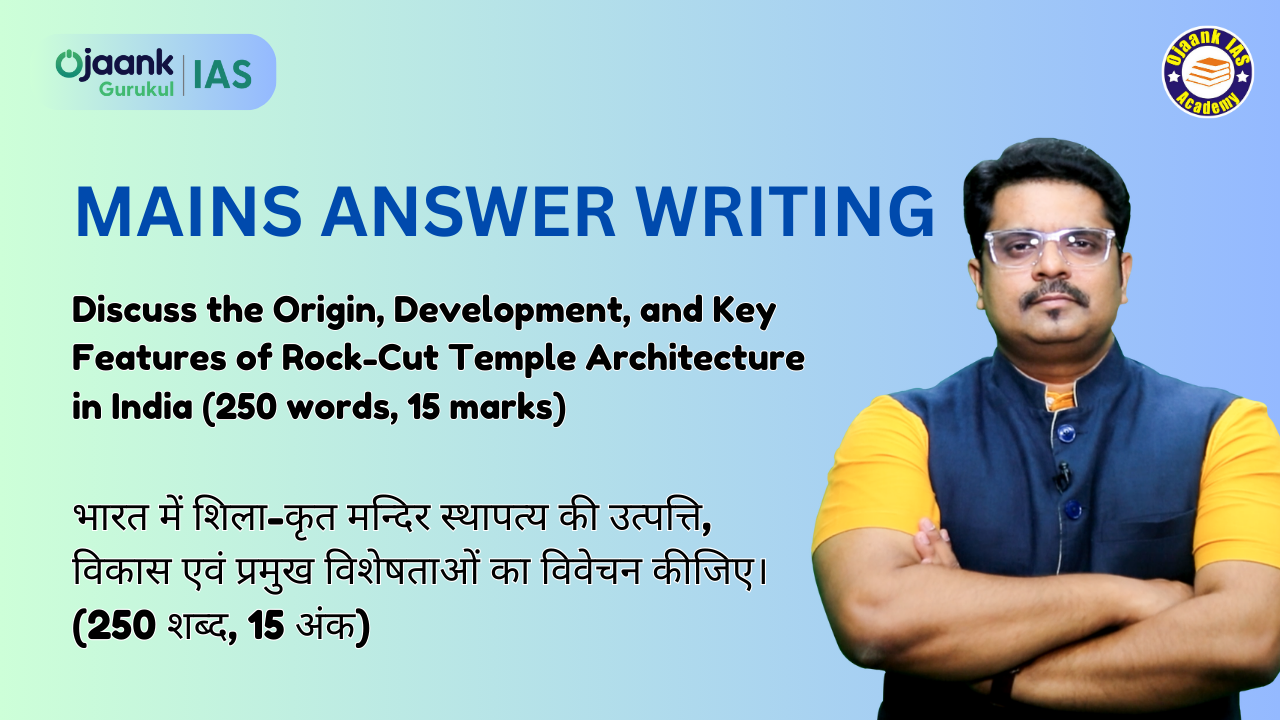Discuss the Origin, Development, and Key Features of Rock-Cut Temple Architecture in India (250 words, 15 marks)

I. Origin and Historical Background:
-
The origin of rock-cut architecture can be traced back to Buddhist viharas and chaityagrihas (Ajanta, Bhimbetka, Barabar caves).
-
During the Maurya period, Ashoka built the Barabar caves (3rd century BCE).
-
The Gupta period, Chalukya, Rashtrakuta, and Pallava rulers saw further development.
II. Major Features:
-
Temples or caves carved from a single rock.
-
Demonstrates high technical skill in architecture.
-
Primarily spread across South India (Ellora, Mahabalipuram, Badami, Ajanta).
-
Extensive artistic features including pillars, mandapas, sanctum, sculptures, etc.
-
Religious diversity – Buddhist, Jain, and Hindu temples.
III. Prominent Examples:
-
Kailasanatha Temple at Ellora – Built by Rashtrakuta ruler Krishna I (carved from a massive rock).
-
Buddhist caves of Ajanta – Known for their paintings and stupas.
-
Rath Temples of Mahabalipuram – Constructed by the Pallava dynasty.
IV. Contemporary Influence:
-
This style is a symbol of the technical skill and religious tolerance in Indian architectural tradition.
-
It remains a model source of study for architecture students even today.
Read: Rock-Cut Temples in India: A Glimpse into Ancient Architectural Brilliance
